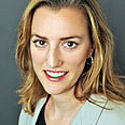11:56 AM
U.S. and European Brokers To Spend $206 Million In 2011 On New Surveillance Programs
On the heels of new financial regulation, U.S. and European brokers will spend $206 million this year on new surveillance programs, according to a new report from TABB Group.
With hundreds of laws yet to be written and rules to be implemented, spending will grow at a CAGR (compound annual growth rate) of 14% to $268 million in 2013, the report's author, Miranda Mizen, said.
To comply, spending on external solutions is expected to grow from 28% in 2011 to 35% of total expenditure in 2013 as brokers leverage vendors' products to fit tight budgets and meet short timelines.
According to Mizen, who is head of European research at TABB Group, changes to market structure and new regulations mean conventional techniques need to be thrown out in favor of surveillance programs that match the markets' dynamism. "It falls on the brokers as the primary intermediary between investors and exchanges to assist regulators in making sure that market surveillance catches up to the real-time dynamics of the market," she said in the report, "Dynamic Surveillance: Detection, Prevention and Deterrence."
Today's surveillance programs are like a patchwork quilt, she added. "Some programs monitor comprehensively in real time, others look backward, but recent market abuse scandals and the May 6th flash crash have revealed there is a yawning divide between the way markets operate and the way they are actually being surveilled."
To meet the onslaught of new requirements and regulations, TABB says brokers are faced now with three gargantuan challenges: collecting, collating, analyzing, storing and retrieving data; ensuring practices and procedures prove their processes are robust and defensible; and expanding the list of details they need to watch for. In addition to satisfying regulators, clients and exchanges, brokers must satisfy the often conflicting internal demands of compliance officers, global heads of risk, heads of market risk, sponsored-access brokers and institutional agency desks.
By focusing on three key components of market surveillance - detection, prevention and deterrence - Mizen explains that brokers can gain real-time and historical analysis and oversight to detect anomalies; controls and processes to prevent errant order flow from reaching the markets by applying broker-owned risk controls; and real-time monitoring, control and, acting as deterrents, heavy penalties.
In the end, she writes, "Surveillance will always be a race against time as market oversight must pull together trading activity as quickly as competition pulls it apart. But the constant expansion and complexity of markets raise the need to protect the markets, detect issues or abnormalities, and by doing so, deter abuse. This can only happen if market surveillance programs and techniques are modern and sophisticated, applied consistently and comprehensively, and are able to keep up with the dynamic markets. Different from the past, brokers are now facing serious regulatory changes across the U.S. and European markets, with Asia not far behind. This time it's a major overhaul and because surveillance is critical, it is in the spotlight."
Melanie Rodier has worked as a print and broadcast journalist for over 10 years, covering business and finance, general news, and film trade news. Prior to joining Wall Street & Technology in April 2007, Melanie lived in Paris, where she worked for the International Herald ... View Full Bio























